Pest Control
The Life Sciences Greenhouse has been under an Integrated Pest Management (IPM) program for more than 15 years.
About
We use biological pest controls in the public areas and only use products that are comptible with the use of beneficial bugs. As much as possible, we rely on predators and parasites to control the plant pests that are inevitable in a greenhouse environment. We monitor the population trends of both the pests and the beneficial insects, and make releases of the ‘good bugs’ as needed. Additionally we monitor individual plants, and physically remove pests by washing leaves, and pruning.
We maintain a pesticide-free environment for not only the health and safety of our visitors and staff, but also to demonstrate that harmful pesticides are not needed with proper plant management. Among other beneficials, we use Encarsia formosa and Delphastus to combat whitefly, and Neoseiulus, Stratiolaelaps and Orius for thrips. Beneficial nematodes are used to manage soil-dwelling bugs such as thrips and fungus gnats.
Biological Pests
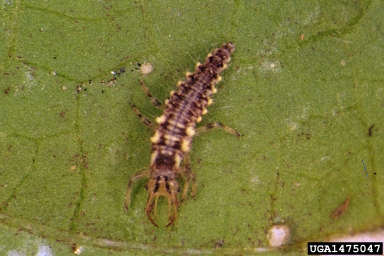 This lacewing larva (Chrysoperla sp.) is a voracious predator. Commonly called ‘Aphid
Lion’, they can consume up to 100 aphids. They also eat scale and mealybugs. They
are nocturnal, feeding only at night.
This lacewing larva (Chrysoperla sp.) is a voracious predator. Commonly called ‘Aphid
Lion’, they can consume up to 100 aphids. They also eat scale and mealybugs. They
are nocturnal, feeding only at night.
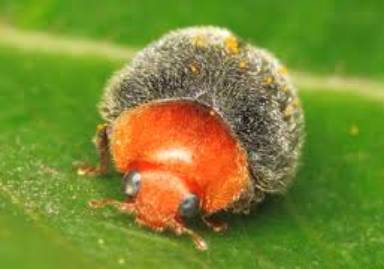 Cryptolaemus montrouzieri beetles feed on mealybugs.
Cryptolaemus montrouzieri beetles feed on mealybugs.
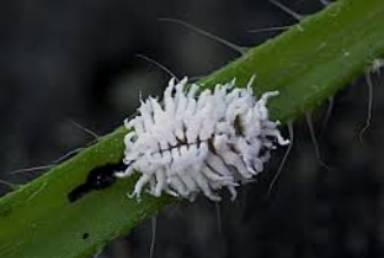 The larval form of Cryptolaemus montrouzieri mimics mealybugs as protection as it
lives among them. Their white filaments are longer than mealybugs' filaments. Otherwise,
the Cryptolaemus larvae look a lot like mealybugs.
The larval form of Cryptolaemus montrouzieri mimics mealybugs as protection as it
lives among them. Their white filaments are longer than mealybugs' filaments. Otherwise,
the Cryptolaemus larvae look a lot like mealybugs.
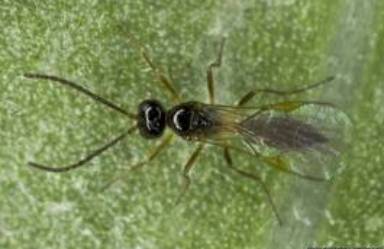 Aphidius colemani is a tiny non-stinging wasp. The females lay their eggs in aphids,
creating a brown mummy of the aphid's body. As the Aphidius larvae develop inside
the aphid, the aphid slowly dies.
Aphidius colemani is a tiny non-stinging wasp. The females lay their eggs in aphids,
creating a brown mummy of the aphid's body. As the Aphidius larvae develop inside
the aphid, the aphid slowly dies.
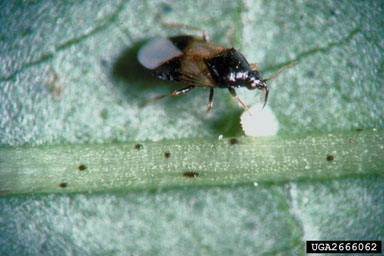 Orius sp. feed on thrips. Thrips have the potential to do a lot of damage in greenhouses.
Thrips are so tiny, it's easy for them to get through protective greenhouse screening.
We use ornamental pepper plants as a nursery and home for the Orius.
Orius sp. feed on thrips. Thrips have the potential to do a lot of damage in greenhouses.
Thrips are so tiny, it's easy for them to get through protective greenhouse screening.
We use ornamental pepper plants as a nursery and home for the Orius.